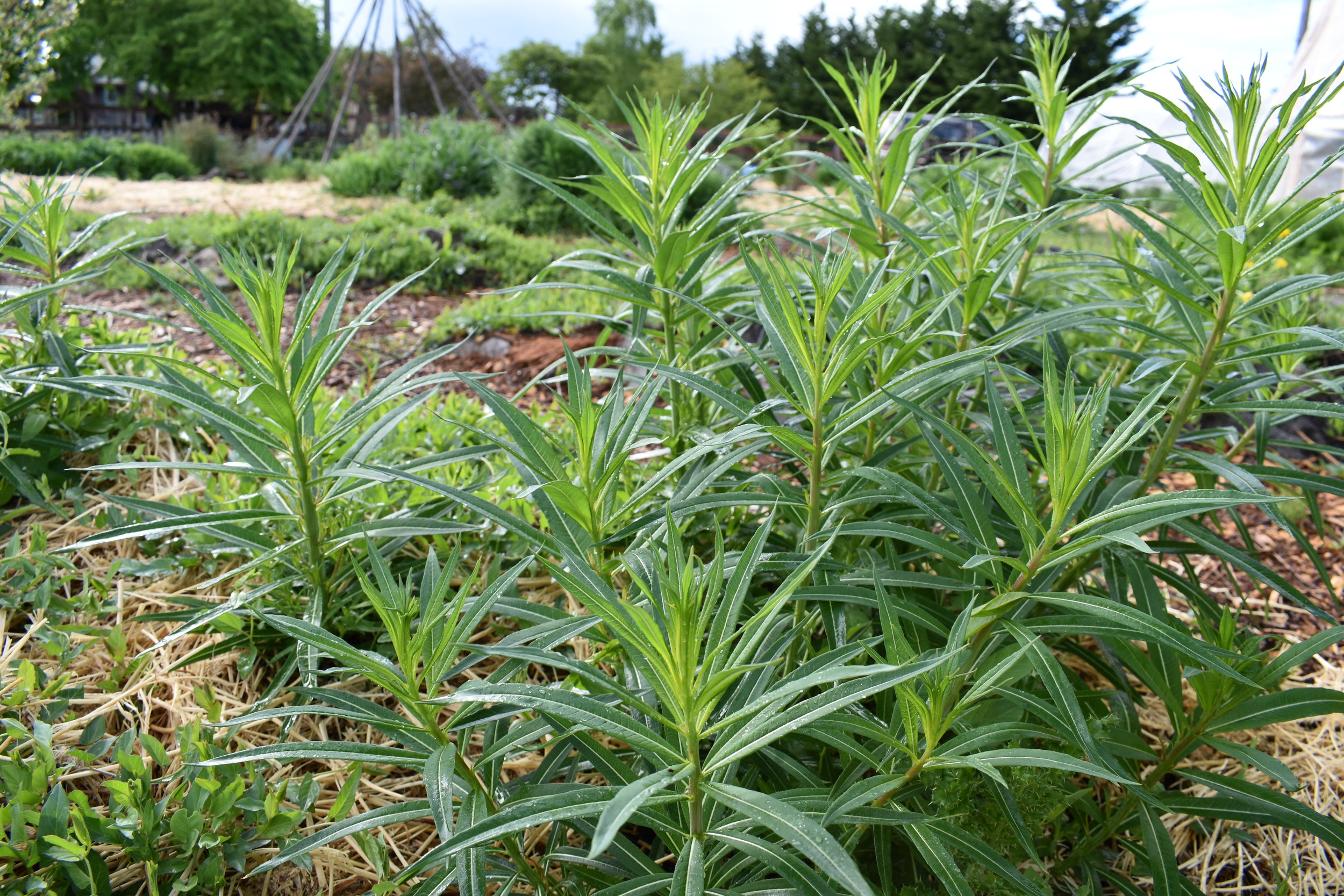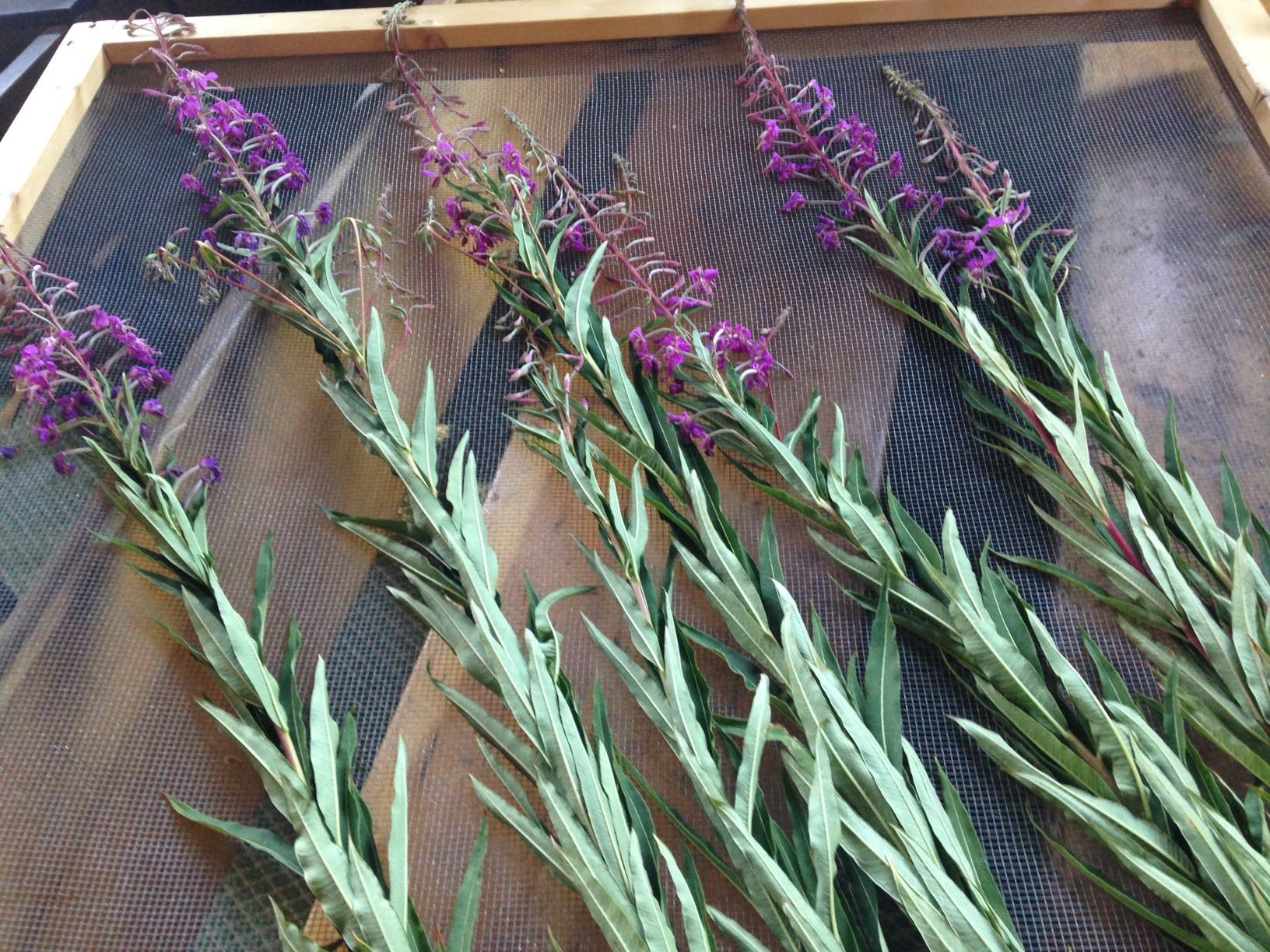Common Names
Fireweed, Great Willowherb
Botanical Name
Chamerion angustifolium (synonyms Chamaenerion angustifolium and Epilobium angustifolium)
Plant Family
Onagraceae (Evening Primrose Family)
Native Range
Temperate Western Hemisphere including PNW. It is an ubiquitous plant in the Boreal Forest ecosystem.
Life Cycle
Perennial
Hardiness Zone
1-9
Habit
To 6ft tall. Showy plumes of pink-purple flowers. Spreading by small rhizomes to form dense patches.
Sun/Soil
Full sun to part shade, moist well-drained soil. In the wild you can find Fireweed growing on forest and wetland edges, and moist meadows.
Germination/Sowing
Seeds are moderately easy to germinate in flats, but are more more successful if direct sown outdoors in fall or early spring.
Growing/Care
Cut back plants in after flowering to keep them tidy and prevent self-seeding. Extremely easy to grow in the garden, Fireweed can be a very showy garden ornamental in addition to its use as a medicine and a nutritious food. It is a hardy plant that can tolerate all sorts of conditions but enjoys well drained moist soil and full sun.
Harvesting
Fireweed can be harvested as soon as flower buds appear through their flowering season. The plants can be found in full bloom through the month of July. The top portion of the plant can be harvested, snipping the stalk above the point where the bottom leaves begin to look yellow or ratty. The leafy stalks can be dried whole and then garbled when needed. I like to harvest the plants in full flower and dry the flowers along side the stalks as they make a yummy addition to the tea.
Culinary Uses
Fireweed leaves are very yummy when young having a green berry-like taste. They have been popular as a substitute for black tea in the past. The new shoots can be eaten as a nutritious spring green chockfull of many vitamins and minerals.
Bees love it and many bee-keepers place hives in the wild Fireweed meadows during flowering season to produce Fireweed honey.
Medicinal Uses
Fireweed is rare to find in the common materia medica yet holds promise as a very powerful anti-inflammatory herb. Both the roots and the leaves can be used for this purpose, topically or internally. The tincture has proven effective for pain due to inflammation, such as arthritis, and also for the reduction of migraines.
Herbalist Michael Moore taught that Fireweed is a great remedy for a candida yeast overgrowth in the gut. The tea taken daily is best for this. Fireweed is a great tonifier for the small intestine and colon, helping to create the right conditions for our beneficial gut flora to flourish, this combined with its antifungal properties, make it a wonderful treatment for candida.
There is a magic and lightness to Fireweed that lifts the spirit and gives it strength. It is a pioneering species, one of the first plants to come in after the ecological destruction caused by forest fires or clear cuts. Fireweed promises us of the return of beauty and abundance and reminds us we are part of a community. It tells us to pick our selves up, dust our selves off and continue to shine brightly in the midst of hardship and devastation.
Themes
Native Plant Garden, Woodland Garden, Apothecary Garden, Low Maintenance, Deer Resistant, Attracts Pollinators, Container Garden, Cut Flowers, Wild Foods.














